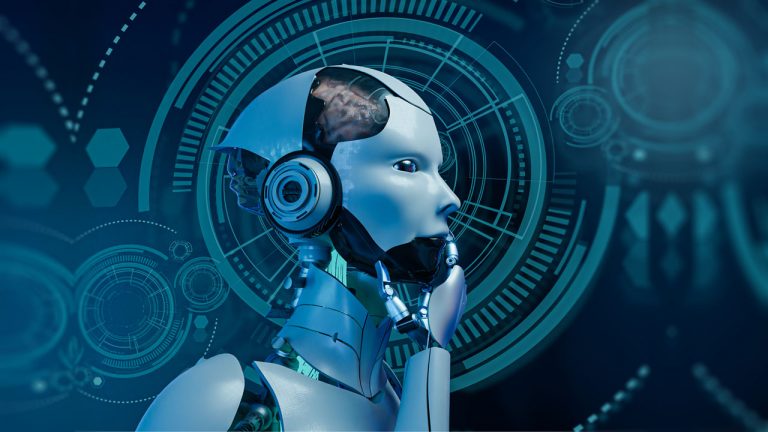
Computer vision, a field at the intersection of artificial intelligence and image processing, is revolutionizing industries worldwide. By enabling computers to interpret and analyze visual data, it has transformed sectors such as manufacturing, healthcare, retail, and transportation. Computer vision applications range from quality control in manufacturing to medical imaging analysis in healthcare, and from visual search and recommendation systems in retail to autonomous vehicles in transportation.
Despite challenges, the future of computer vision looks promising with advancements in deep learning and integration with emerging technologies, opening up new opportunities for automation, optimization, and innovation. Its transformative power is reshaping how industries perceive, analyze, and respond to the visual world.
Computer Vision Applications in Manufacturing Industry

Computer vision has become a game-changer in the manufacturing industry, revolutionizing various processes and driving significant improvements in productivity, quality control, and automation. Here are some key applications of computer vision in manufacturing:
Quality Control and Defect Detection
Computer vision systems can analyze visual data in real-time to identify defects, inconsistencies, or deviations in the production line. By comparing images of manufactured products against predefined standards, computer vision algorithms can spot defects such as surface imperfections, incorrect dimensions, or faulty components. This allows for immediate intervention, reducing waste, and ensuring consistent product quality.
Object Recognition and Sorting
Computer vision technology enables machines to recognize and classify objects accurately. In manufacturing, this capability is used to automate sorting tasks, where products or components need to be categorized based on specific criteria such as size, shape, color, or markings. By employing computer vision algorithms, manufacturers can achieve high-speed, accurate, and efficient sorting processes, leading to streamlined operations and improved overall productivity.
Robotics and Automation
Computer vision plays a vital role in guiding robots and automation systems within the manufacturing environment. By integrating cameras and vision systems with robotic arms or automated machinery, computer vision enables precise object detection, localization, and manipulation. This allows robots to perform tasks such as picking and placing objects, assembly operations, or intricate manipulations with exceptional accuracy and adaptability. The combination of computer vision and robotics optimizes production workflows, enhances flexibility, and reduces the need for human intervention in repetitive or hazardous tasks.
Computer vision has transformed the manufacturing industry by enhancing quality control, enabling efficient object recognition and sorting, and driving automation through the integration of robotics. These applications lead to improved product consistency, reduced waste, enhanced operational efficiency, and ultimately, increased competitiveness in the manufacturing sector. As computer vision continues to advance, it holds immense potential for further optimizing manufacturing processes and unlocking new levels of productivity and innovation.
Computer Vision in Healthcare

The healthcare industry has witnessed a significant transformation with the emergence of computer vision. It has revolutionized diagnostics, medical imaging, and patient care, providing healthcare professionals with valuable insights from visual data. The use of computer vision algorithms and deep learning models has led to improved accuracy, efficiency, and patient outcomes. Below are some essential applications of computer vision in healthcare:
Medical Imaging Analysis
Computer vision algorithms excel at analyzing medical images such as X-rays, MRIs, and CT scans. They can automatically detect and segment anatomical structures, identify abnormalities or lesions, and assist radiologists in diagnosing various conditions. Computer vision techniques, combined with machine learning, enable more precise and efficient interpretation of medical images, leading to earlier detection of diseases, personalized treatment plans, and improved patient care.
Disease Diagnosis and Detection
Computer vision aids in the detection and diagnosis of various diseases by analyzing visual cues and patterns. For example, in dermatology, computer vision systems can analyze images of skin lesions to identify potential signs of skin cancer. Similarly, in ophthalmology, computer vision algorithms can analyze retinal images to detect signs of diabetic retinopathy or other eye diseases. Computer vision-based diagnostic tools offer faster, more accurate screenings, enabling early intervention and reducing the burden on healthcare providers.
Surgical Assistance and Planning
Computer vision technologies assist surgeons in planning and performing complex procedures. By integrating preoperative images, such as CT scans or MRIs, with real-time visual data during surgery, computer vision systems can provide surgeons with augmented reality overlays, highlighting critical structures, guiding incisions, or offering real-time feedback. This enhances surgical precision, minimizes risks, and improves patient safety.
The healthcare industry can greatly benefit from computer vision technology, which can provide sophisticated analysis of medical images, assist in diagnosing diseases, and facilitate surgical procedures. By incorporating these technologies, healthcare professionals can improve their diagnostic abilities, enhance treatment planning, and offer more personalized and efficient patient care. As computer vision technology continues to advance, it has the potential to revolutionize multiple aspects of healthcare, resulting in better outcomes and improved quality of life for patients.
Computer Vision in Retail and E-commerce

The utilization of computer vision has become a groundbreaking technology in the retail and e-commerce industries. It has brought about a significant change in the way businesses engage with their customers, streamline their operations, and improve the shopping experience. Through the utilization of computer vision algorithms and machine learning models, retailers can extract valuable insights from visual data, resulting in personalized recommendations, enhanced inventory management, and augmented reality experiences. Below are some essential applications of computer vision in the retail and e-commerce sectors:
Visual Search and Product Recommendation
Computer vision enables visual search capabilities, allowing customers to search for products by uploading images or using a camera to capture an item of interest. By analyzing visual features and comparing them with product catalogs, computer vision algorithms can provide accurate and relevant search results. Additionally, computer vision-powered recommendation systems leverage customer data and visual patterns to offer personalized product recommendations, enhancing customer engagement and driving sales.
Augmented Reality for Virtual Try-On and Product Visualization
Computer vision plays a crucial role in augmented reality (AR) experiences within the retail industry. By using computer vision algorithms to detect and track facial features or body movements, virtual try-on solutions enable customers to visualize how products such as clothing, accessories, or cosmetics would look on them. This enhances the online shopping experience, increases customer confidence, and reduces the likelihood of returns.
Inventory Management and Loss Prevention
Computer vision systems can help retailers optimize inventory management processes. By employing cameras and computer vision algorithms, retailers can automatically monitor and track inventory levels, detect out-of-stock items, and analyze shelf organization. Computer vision also aids in loss prevention by identifying suspicious behavior, such as shoplifting or fraudulent transactions, through real-time video analytics.
The retail and e-commerce industry has undergone a significant transformation with the advent of computer vision. This technology has enabled retailers to offer personalized recommendations, virtual try-on experiences, and efficient inventory management through visual search. By leveraging the capabilities of computer vision, retailers can enhance customer engagement, optimize operations, and create more immersive and personalized shopping experiences. With further advancements in computer vision, the retail industry is poised for innovation and improved customer satisfaction.
Computer Vision for Transportation and Logistics

Computer vision has emerged as a game-changing technology in the transportation and logistics sector, enabling a wide range of applications that improve efficiency, safety, and customer satisfaction. By leveraging computer vision algorithms and real-time visual data analysis, transportation and logistics companies can optimize route planning, enhance security, and streamline operations. Here are some key applications of computer vision in transportation and logistics:
Autonomous Vehicles and Self-Driving Technology
Computer vision plays a critical role in enabling autonomous vehicles. By using cameras and sensors, computer vision systems help vehicles perceive and understand their surroundings, detecting objects, pedestrians, and road signs. These visual cues are processed in real-time to make decisions and navigate safely, reducing the reliance on human drivers. Computer vision enables self-driving technology to enhance road safety, increase efficiency, and pave the way for the future of transportation.
Traffic Monitoring and Management
Computer vision systems can analyze live video feeds from cameras installed at key traffic points to monitor traffic flow, detect congestion, and identify accidents or hazards. This information can be used to optimize traffic signal timings, provide real-time traffic updates to drivers, and improve overall traffic management. By utilizing computer vision, transportation authorities can make data-driven decisions, reduce congestion, and enhance the efficiency of road networks.
Package Sorting and Delivery Optimization
Computer vision is utilized in logistics and package sorting centers to automate the process of identifying, tracking, and sorting packages. By using visual recognition algorithms, computer vision systems can quickly and accurately read labels, barcodes, or QR codes on packages, ensuring correct sorting and efficient delivery. Computer vision also enables route optimization by analyzing traffic conditions, weather, and other factors to determine the most efficient delivery routes, leading to cost savings and improved delivery speed.
Computer Vision in Security and Surveillance

The utilization of computer vision algorithms and real-time video analytics has made computer vision an essential technology in the domains of security and surveillance. It has enabled organizations to strengthen safety measures, thwart criminal activities, and effectively scrutinize and evaluate large volumes of visual data. Security and surveillance systems can identify potential hazards, recognize individuals, and furnish crucial insights for further investigation. Below are some significant applications of computer vision in the field of security and surveillance:
Facial Recognition and Biometric Identification
Computer vision enables robust facial recognition capabilities, allowing security systems to identify individuals from live video feeds or recorded footage. By analyzing facial features and comparing them against a database of known faces, computer vision algorithms can accurately identify individuals, detect unauthorized access, and enhance security measures in restricted areas. Biometric identification systems powered by computer vision offer a powerful tool for access control and surveillance.
Intrusion Detection and Threat Prevention
Computer vision systems can analyze video feeds from surveillance cameras to detect and identify potential threats or suspicious activities in real-time. By using object detection algorithms, computer vision can recognize objects, people, or behaviors that deviate from normal patterns and trigger alarms or alerts. This helps in preventing theft, vandalism, or unauthorized access, enhancing overall security measures.
Video Analytics for Crime Investigation
Computer vision technologies enable advanced video analytics for forensic investigations. By analyzing recorded video footage, computer vision algorithms can extract valuable information such as license plate recognition, object tracking, or behavior analysis. This aids law enforcement agencies in identifying suspects, reconstructing events, and gathering evidence, leading to more effective investigations and crime prevention.
Computer vision has transformed the field of security and surveillance by enabling facial recognition, intrusion detection, and advanced video analytics. These applications enhance safety, enable proactive threat prevention, and provide valuable insights for investigations. As computer vision continues to evolve, it holds the potential to revolutionize security and surveillance practices, making communities and public spaces safer and more secure.
Challenges and Limitations of Computer Vision
While computer vision has made significant advancements and brought about transformative changes in various industries, it also faces several challenges and limitations. It is important to be aware of these factors to ensure effective implementation and address potential issues. Here are some key challenges and limitations of computer vision:
- Data Quality and Quantity: Computer vision algorithms heavily rely on high-quality and diverse training data for accurate performance. Obtaining a large and well-annotated dataset can be time-consuming and expensive, especially for specialized domains or rare events. Inadequate or biased training data may lead to suboptimal performance or unintended biases in the computer vision system’s outputs.
- Limited Generalization: Computer vision algorithms often struggle to generalize well beyond the specific conditions they were trained on. Variations in lighting conditions, viewpoints, object appearances, or environmental factors can impact the algorithm’s performance. Achieving robustness and generalizability across diverse real-world scenarios remains a challenge.
- Interpretability and Explainability: Deep learning models used in computer vision can be highly complex, making it challenging to interpret and explain the reasoning behind their predictions. Lack of transparency and interpretability can hinder trust, especially in critical applications such as healthcare or autonomous systems. Efforts are being made to develop techniques for making computer vision algorithms more explainable.
- Privacy and Ethical Concerns: Computer vision technologies, such as facial recognition, raise privacy and ethical concerns related to surveillance, data collection, and potential misuse. Proper protocols, regulations, and transparency are necessary to ensure the responsible use of computer vision and protect individual privacy rights.
- Real-time Processing and Hardware Limitations: Real-time processing of high-resolution visual data requires significant computational power and efficient hardware infrastructure. The deployment of computer vision systems in resource-constrained environments or devices with limited processing capabilities can pose challenges. Advancements in hardware acceleration, edge computing, and efficient algorithms are addressing these limitations.
- Adversarial Attacks: Computer vision systems can be vulnerable to adversarial attacks, where subtle modifications to input images can lead to misclassification or fooling the algorithm. Robustness against such attacks remains an ongoing research challenge in computer vision.
- Bias and Fairness: Computer vision algorithms can inherit biases present in the training data, leading to biased predictions or discriminatory outcomes. Ensuring fairness and addressing bias in computer vision models is a critical concern, requiring careful attention to data selection, preprocessing, and algorithmic design.
- Integration and Scalability: Integrating computer vision systems into existing infrastructures and workflows can be complex, requiring compatibility, data synchronization, and system integration. Scaling computer vision solutions to handle large volumes of visual data in real-time is also a significant challenge.
Despite these challenges, continuous research and technological advancements are driving progress in computer vision. Overcoming these limitations will lead to more accurate, reliable, and ethical computer vision systems, unlocking the further potential for transformative applications across industries.
Future Trends and Opportunities in Computer Vision
Computer vision is a rapidly evolving field with exciting future prospects. As technology advances and new research emerges, several trends and opportunities are shaping the future of computer vision. Here are some key trends and opportunities to watch out for:
- Deep Learning and Neural Networks: Deep learning has significantly propelled the progress of computer vision. Future advancements in deep neural networks, such as convolutional neural networks (CNNs) and generative adversarial networks (GANs), will continue to improve the accuracy and capabilities of computer vision systems. Enhanced architectures and training techniques will enable better object recognition, segmentation, and understanding complex visual scenes.
- 3D Vision and Depth Perception: Incorporating depth perception into computer vision systems is a promising direction. By leveraging techniques such as stereo vision, LiDAR, or time-of-flight sensors, computer vision can gain a more comprehensive understanding of the 3D structure of the environment. This opens up opportunities for applications such as augmented reality, robotics, and autonomous navigation.
- Multimodal Learning and Sensor Fusion: Integrating multiple sources of information, such as visual data, audio, or textual context, can enhance the robustness and contextual understanding of computer vision systems. Multimodal learning and sensor fusion techniques will enable a more comprehensive and nuanced analysis of complex scenes, improving object recognition, event detection, and human-computer interaction.
- Edge Computing and Real-time Processing: The demand for real-time processing and low-latency applications is driving the shift toward edge computing. By bringing the computational power closer to the source of data, edge devices can perform real-time computer vision tasks, enabling applications such as surveillance, autonomous vehicles, and smart devices without relying heavily on cloud infrastructure.
- Explainable and Ethical AI: As computer vision becomes more integrated into critical applications, there is a growing need for explainable and ethical AI. Efforts to develop transparent and interpretable computer vision models, address biases and ensure fairness and privacy will continue to gain importance. Research in trustworthy AI and ethical considerations will shape the future of responsible computer vision systems.
- Industry-specific Applications: Computer vision will find widespread adoption in various industries, beyond its current applications. Industries such as agriculture, construction, healthcare, and entertainment will benefit from customized computer vision solutions. Applications may include crop monitoring, automated construction site analysis, surgical assistance, and immersive augmented reality experiences.
- Collaborative Robotics and Human-Robot Interaction: Computer vision will play a key role in enabling safe and efficient collaboration between robots and humans. Vision systems will allow robots to perceive and understand human gestures, intentions, and emotions, facilitating natural and intuitive interactions. This opens up opportunities for collaborative manufacturing, healthcare robotics, and service robots.
- Data Collection and Annotation: The availability of large-scale, high-quality datasets is crucial for training and advancing computer vision models. Future opportunities lie in developing efficient methods for data collection, annotation, and synthesis. Crowdsourcing, active learning, and synthetic data generation techniques will contribute to expanding the availability of diverse and annotated datasets.
These trends and opportunities indicate an exciting future for computer vision, with advancements in deep learning, multimodal perception, real-time processing, ethical considerations, and industry-specific applications. As research and technology continue to progress, computer vision will become increasingly integral to various aspects of our lives, enabling automation, enhancing human-computer interactions, and delivering innovative solutions across industries.
Wrapping Up
Computer vision has become a transformative technology with wide-ranging applications in various industries. It revolutionizes how we perceive and interact with visual data, leveraging advanced algorithms, deep learning models, and real-time processing. Computer vision finds application in manufacturing, healthcare, retail, transportation, security, and more, enabling quality control, medical imaging analysis, visual search, autonomous vehicles, threat detection, and other valuable functionalities.
Challenges such as data quality, interpretability, privacy, and ethics must be addressed through ongoing research, responsible development, and thoughtful implementation. The future of computer vision looks promising, driven by trends like deep learning advancements, 3D vision, multimodal learning, edge computing, and explainable AI, while maintaining a focus on ethics and fairness. Collaboration between researchers, practitioners, policymakers, and society is crucial to unlock its full potential and create a future where intelligent visual systems contribute to safer, more efficient, and more accessible solutions in diverse domains.
